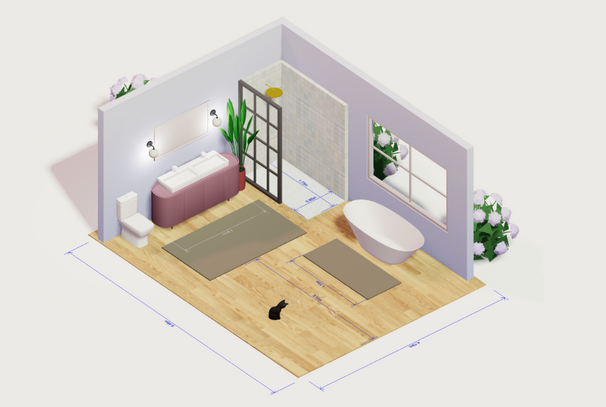- Home
- Articles
- Architectural Portfolio
- Architectral Presentation
- Inspirational Stories
- Architecture News
- Visualization
- BIM Industry
- Facade Design
- Parametric Design
- Career
- Landscape Architecture
- Construction
- Artificial Intelligence
- Sketching
- Design Softwares
- Diagrams
- Writing
- Architectural Tips
- Sustainability
- Courses
- Concept
- Technology
- History & Heritage
- Future of Architecture
- Guides & How-To
- Art & Culture
- Projects
- Interior Design
- Competitions
- Jobs
- Store
- Tools
- More
- Home
- Articles
- Architectural Portfolio
- Architectral Presentation
- Inspirational Stories
- Architecture News
- Visualization
- BIM Industry
- Facade Design
- Parametric Design
- Career
- Landscape Architecture
- Construction
- Artificial Intelligence
- Sketching
- Design Softwares
- Diagrams
- Writing
- Architectural Tips
- Sustainability
- Courses
- Concept
- Technology
- History & Heritage
- Future of Architecture
- Guides & How-To
- Art & Culture
- Projects
- Interior Design
- Competitions
- Jobs
- Store
- Tools
- More
Discover the Advantages of CAD: Boosting Accuracy, Efficiency, and Collaboration
Discover the game-changing advantages of Computer-Aided Design (CAD) in design and engineering. From enhanced accuracy and productivity to improved collaboration and innovation across industries like architecture, automotive, and aerospace, explore how CAD revolutionizes workflows while addressing challenges like cost and accessibility. Unleash the future of design with CAD!

In today’s fast-paced world, precision and efficiency are everything, especially in design and engineering. That’s where Computer-Aided Design (CAD) steps in, revolutionizing the way we create and innovate. Whether we’re designing skyscrapers or crafting intricate machinery, CAD has become a game-changer, offering tools that take ideas from concept to reality with unmatched accuracy.
Gone are the days of tedious hand-drawn blueprints. With CAD, we can visualize, modify, and perfect designs in a fraction of the time. Its ability to streamline workflows and improve collaboration has made it an essential tool across industries like architecture, manufacturing, and even fashion. Let’s explore how CAD empowers us to push boundaries and achieve more.
Table of Contents
ToggleWhat Is CAD?
CAD, or Computer-Aided Design, refers to the use of software to create detailed 2D and 3D models utilized in design, engineering, and manufacturing. It streamlines the design process by enabling precision, scalability, and efficient modifications.
Modern CAD software supports various design tasks, including drafting, prototyping, and simulation. This functionality allows users to visualize and analyze ideas before production. Industries like architecture, automotive, and aerospace rely on CAD for high-quality outcomes with reduced material waste.
Key features of CAD include parametric modeling, which connects multiple components for better design consistency, and tools for generating technical drawings. Some CAD programs also integrate with Computer-Aided Manufacturing (CAM) systems, creating end-to-end digital workflows.

Key Features Of CAD
CAD software offers essential functionalities that streamline design, increase productivity, and enhance collaboration. These features cater to various industries, providing advanced capabilities for creating precise and innovative designs.
User-Friendly Interfaces
Many CAD platforms feature intuitive tools that simplify complex design tasks. These interfaces include customizable toolbars, drag-and-drop functionality, and real-time navigation aids. For example, software like AutoCAD and SolidWorks provide tutorials, shortcuts, and help menus to reduce the learning curve for users. Clear visual layouts and mouse-driven controls improve accessibility even for beginners.
Advanced Simulation Tools
Integrated simulation tools in CAD software enable virtual testing and analysis. Engineers utilize these tools to examine stress, thermal properties, and fluid dynamics without physical prototypes. Programs like ANSYS and CATIA perform finite element analysis (FEA) and computational fluid dynamics (CFD), ensuring designs meet performance criteria. This reduces error margins and accelerates the decision-making process in product development.
Compatibility With Other Software
Modern CAD applications support seamless integration with complementary technologies. They often work with software such as CAM for manufacturing, BIM for construction, and PLM systems for product lifecycle management. File formats like STEP, IGES, and DXF enhance cross-platform data sharing, making it easier to collaborate across departments and industries. For instance, Autodesk products integrate with Revit and Fusion 360 for smoother workflows.

The Advantages Of CAD In Design
Computer-Aided Design (CAD) revolutionizes the design process by combining precision, efficiency, and collaboration into one cohesive platform. These advantages create transformative outcomes across industries.
Improved Accuracy And Precision
CAD ensures high levels of accuracy by eliminating manual errors associated with traditional drafting tools. Advanced features like snap-to-grid functions and parametric modeling maintain design consistency, even in complex projects. For example, architects use these tools to position structural components with millimeter-level precision.
Design revisions become more seamless with CAD’s ability to precisely adjust dimensions and proportions. Engineers analyze tolerances and make real-time modifications without compromising overall integrity. This accuracy results in optimized workflows and higher-quality outputs.
Increased Efficiency And Productivity
CAD accelerates workflows by automating repetitive tasks and offering pre-built templates. Designers reuse standard components and libraries to save hours otherwise spent recreating elements. In manufacturing, 3D modeling tools generate prototypes faster, speeding time-to-market.
The software’s simulation capabilities enable early identification of design flaws, reducing the need for costly physical revisions. Automotive engineers, for instance, rely on these features to test aerodynamics virtually, drastically cutting development cycles.
Enhanced Collaboration And Communication
CAD enhances communication among teams by providing centralized digital platforms. Cloud-based features allow active collaboration in real time, where stakeholders review designs together regardless of location. For example, teams in architecture share 3D models with clients remotely, gathering quick approvals.
Compatibility with external systems promotes seamless data exchange across departments. Integration with Building Information Modeling (BIM) or Product Lifecycle Management (PLM) tools supports cross-functional collaboration and ensures consistency throughout project lifecycles.

Industry Applications Of CAD
CAD plays a vital role in numerous industries by enhancing design processes, improving accuracy, and fostering innovation. Its adaptability makes it indispensable for sectors ranging from engineering to product design.
Automotive And Aerospace Engineering
In automotive and aerospace engineering, CAD optimizes component design and system integration. Engineers design complex structures like car frames and aircraft fuselages with precision, reducing drag and improving durability. CAD simulation tools enable virtual testing of performance under various conditions, saving time and resources. For instance, aerodynamic analysis and crash testing simulations are pivotal in ensuring safety and efficiency.
Architecture And Construction
CAD transforms architectural and construction planning by creating detailed 2D and 3D blueprints. These designs offer precise measurements and layouts for structures, streamlining communication with contractors and clients. Its integration with Building Information Modeling (BIM) enhances project coordination by overlapping architectural, structural, and mechanical systems. Examples like designing sustainable buildings and simulating energy efficiency demonstrate its utility in modern construction.
Consumer Product Design
In consumer product design, CAD accelerates the creation of innovative products. Designers use CAD to create detailed models of items like electronics, furniture, and appliances for prototyping and presentation. CAD software enables material performance testing, ensuring durability and cost-effectiveness. For example, shoe manufacturers use CAD to design ergonomic models while testing different materials virtually before production.

Challenges And Limitations
While CAD transforms design and engineering, it’s not without challenges. Users may encounter steep learning curves, especially with advanced features or specialized industry tools. Mastering parametric modeling or simulation functions requires technical training, which can increase initial implementation time.
Software costs pose another limitation. High-end CAD applications like AutoCAD, SolidWorks, or CATIA demand significant investment, including licensing fees and periodic updates. For smaller firms or independent designers, affordability becomes a critical concern.
Hardware requirements also limit accessibility. Many CAD programs need powerful processors, graphics cards, and extensive storage for optimal performance. Projects involving large 3D models or simulations can strain systems, disrupting workflows if hardware isn’t sufficient.
Compatibility issues arise when integrating CAD files with other software. Variations in file formats across platforms make collaboration tedious without proper converters or open format support, leading to possible data inconsistencies.
Lastly, CAD relies heavily on digital infrastructure. System failures or software crashes risk data loss, particularly where backups or cloud storage aren’t in place. Such vulnerabilities can delay projects and add recovery costs if not appropriately addressed.
Conclusion
CAD revolutionizes design and engineering processes by offering unparalleled accuracy, efficiency, and collaborative capabilities. Its integration into industries like architecture, automotive, aerospace, and consumer product design has streamlined workflows, fostered innovation, and reduced production timelines. Modern CAD software combines powerful features such as parametric modeling, virtual simulations, and real-time review tools, ensuring high-quality results across projects.
Despite its advantages, CAD comes with challenges. The steep learning curve of advanced software, high licensing costs, and significant hardware requirements can pose barriers to adoption. Compatibility and digital reliance issues highlight the importance of robust infrastructure and proper training. Addressing these challenges helps maximize CAD’s benefits for design and engineering professionals.
- 3D CAD modeling
- advanced CAD features
- CAD accuracy
- CAD benefits
- CAD collaboration
- CAD design precision
- CAD efficiency
- CAD for architects
- CAD innovation
- CAD productivity
- CAD software
- CAD software comparison
- CAD software for designers
- CAD tools for engineers
- collaborative CAD solutions
- computer-aided design
- efficient CAD solutions
- improve accuracy with CAD
- professional CAD software
illustrarch is your daily dose of architecture. Leading community designed for all lovers of illustration and #drawing.
Submit your architectural projects
Follow these steps for submission your project. Submission FormLatest Posts
Best Architectural Software for Students in 2025
In 2025, digital tools aren’t just convenient — they’re essential to learning,...
Beginner’s Guide to Arcadium 3D: Your First Room Design in 5 Easy Steps
Designing a room used to mean wrestling with tape measures, mood boards,...
Architectural Design Software Tools for Student Design
Many architecture students want fast ways to explore ideas. Some of them...
Lumion 2024.3: It’s Time to Enhance Urban Visualization
With 5x faster video rendering, a remarkable improvement in material quality, and...












Leave a comment